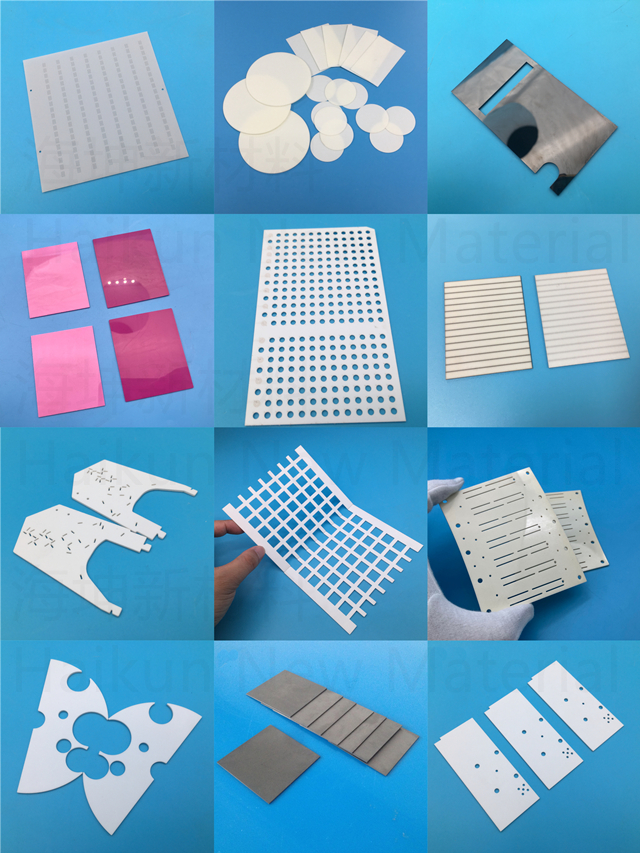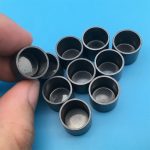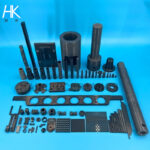Can ceramic carving be done with laser engraving? This article tells you the truth!
With the increasingly widespread application of precision ceramics, from industrial structural components to artistic ornaments, “ceramic carving” has become a hot topic of interest for many businesses and individuals. So, the question arises: Can ceramics be laser-carved? And what are the results?
E-mail:sales01@hkceramic.com

| Plate material mm (L, H, and W can be selected as needed, customization supported) | ||||||||||||
| L | 3 | 5 | 8 | 10 | 12 | 15 | 18 | 20 | 22 | 25 | 28 | More (Customizable) |
| W*H | 100*100 | 90*140 | 95*145 | 150*150 | 160*160 | 122*290 | 110*275 | More (Customizable) | ||||
| Rod material mm (W, Ø can be selected as needed, customization supported) | ||||||||||||
| Ø | 0.5 | 0.8 | 0.9 | 1 | 1.5 | 2 | 2.5 | 3 | 3.5 | 4 | 4.5 | More (Customizable) |
| W | 60 | 100 | 120 | 200 | More (Customizable) | |||||||
Ceramic materials inherently possess characteristics such as high hardness, high brittleness, and high temperature resistance. Traditional mechanical engraving methods are inefficient and result in rapid tool wear. In contrast, laser engraving, with its advantages of non-contact processing, high precision, and high speed, has become an increasingly popular processing method in recent years.
However, not all lasers can be used to engrave ceramics. Laser engraving of ceramics requires high-energy-density, short-pulse lasers (such as fiber lasers or CO₂ lasers) to burn, discolor, or create engraved patterns on the ceramic surface through instantaneous high temperatures.

Surface Color-Changing Engraving
Utilizing the instantaneous high temperature of a laser to change the color of the ceramic glaze, creating patterns or text.
Commonly used for ceramic nameplates, decorative ceramic tiles, instrument panels, etc.
Features: Clear, aesthetically pleasing, and non-contact wear.
Shallow etching engraving
Shallow engravings are created by ablating the surface with a high-energy laser.
Commonly used for coding, QR codes, and logo markings on industrial ceramic parts.
Features: Permanent markings that do not affect the overall performance of the ceramic.
Deep carving or cutting
Higher-energy lasers can perform localized cutting or deep cutting, but power must be carefully controlled to avoid microcracks.
They are commonly used for alumina ceramic sheets, silicon nitride backing plates, and zirconium oxide crafts.
| ceramic types | Laser engraving adaptability | Features |
|---|---|---|
| alumina ceramics | ★★★★☆ | Excellent laser absorption results in clear engraving, making it suitable for industrial marking. |
| Zirconia ceramics | ★★★☆☆ | High reflectivity requires high-energy lasers for color development or etching. |
| silicon nitride ceramics | ★★★☆☆ | It has good thermal stability and can be engraved with QR codes or serial numbers. |
| Machinable ceramics(MACOR) | ★★★★★ | Extremely easy to laser engrave, suitable for graphic processing and experimental use. |
| Glazed ceramics | ★★★☆☆ | Color-changing engraving, but easily affected by glaze thickness. |

✅Non-contact processing: No mechanical stress, and will not damage the ceramic structure.
✅ High precision: The pattern is clear and the lines are delicate.
✅Environmentally friendly and consumable-free: No ink or cutting tools are required.
✅Can be automated in batches: suitable for industrial production lines.
Control the laser power and frequency to prevent thermal cracking.
After carving, the surface can be cleaned or polished to enhance the visual effect.
For zirconia ceramics with high reflectivity, surface roughening or sandblasting can be performed first to improve the absorption rate.
Ceramic carving is no longer just an art form; it is becoming an important processing step in fields such as precision manufacturing, electronics, medical devices, and semiconductors.
The advent of laser engraving has made markings on ceramic surfaces more precise, aesthetically pleasing, and durable.
As industry insiders say:
“Laser engraving gives ceramics a soul.”
This article was originally published by Dongguan Haikun New Materials Co., Ltd.
Haikun specializes in the processing of precision ceramic structural parts, with 20 years of production experience, and provides non-standard customized services such as zirconia ceramics, alumina ceramics, and silicon nitride ceramics.
We support the entire process of laser engraving, precision marking, polishing, grinding, forming, and sintering, and are widely used in semiconductor, new energy, machinery, medical and other fields.
*For more details, please feel free to contact our company.

Small Silicon Carbide Ceramic Crucible
Material:Silicon Carbide Ceramics
Describe:Custom small silicon carbide (SiC) ceramic crucibles offer stability and durability at high temperatures, ideal for reliable experiments and production.

High Temperature Resistant Alumina Ceramic Insulation Ring
Material:Alumina ceramics
Describe:High Temperature Resistant Alumina Ceramic Insulation Ring, also known as porous retaining rings, feature precise designs with drilled holes for secure connection. Their high hardness and strength ensure stability and durability under pressure, ideal for long-lasting equipment performance.

High Temperature Silicon Nitride Ceramics
Material:Silicon Nitride Ceramics
Describe:Our silicon nitride ceramic sealing rings are made of 99% high-purity Si₃N₄ material and are formed by hot pressing and sintering. They have super corrosion resistance (resistance to HF acid and molten aluminum) and high temperature resistance (continuous operation at 1200°C). They have a 50% longer service life than traditional silicon carbide sealing rings and are widely used in chemical...

Macor Ceramic Ferrule/Bush
Material:Macor Ceramic
Describe:Machinable ceramic Bush are a type of advanced ceramic material with excellent machining properties. They can be cut, drilled, milled, etc. on conventional machining equipment (such as CNC, lathes, and drilling machines) without the need for special diamond tools. They are widely used in precision electronics, semiconductors, medical and high-temperature insulation fields.

High Thermal Conductivity Alumina Ceramic Substrate
Material:Alumina ceramics
Describe:High Thermal Conductivity Alumina Ceramic Substrate, also known as porous retaining rings, feature precise designs with drilled holes for secure connection. Their high hardness and strength ensure stability and durability under pressure, ideal for long-lasting equipment performance.

Aluminum Nitride Precision Ceramic Accessories
Material:Aluminum Nitride Ceramics
Describe:Aluminum Nitride Precision Ceramic Accessories offer precise perforation for mechanical support, electrical insulation, and thermal management enhancement in precision applications.
